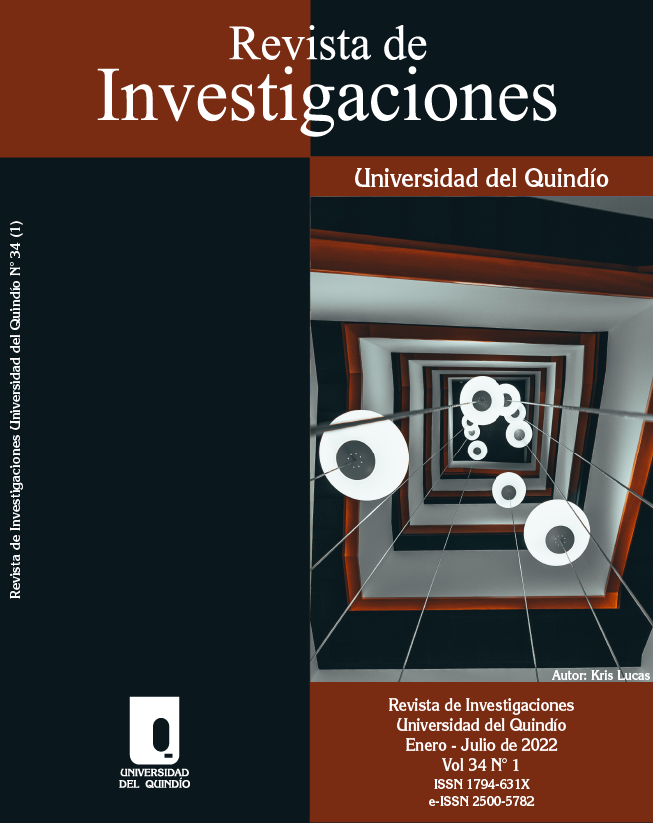Enfoque del sistema de información geográfica sobre la priorización de la gestión de la cuenca de gubawan, basilan, filipinas usando análisis morfométrico
DOI:
https://doi.org/10.33975/riuq.vol34n1.465Palabras clave:
SIG, morfometría, priorización de la gestión, cuenca de Gubawan, Basilan, Sistema de Información GeográficaResumen
El estudio de investigación se llevó a cabo en la cuenca de Gubawan, provincia de Basilan. La cuenca tiene una superficie total de 19.348,48 hectáreas (193,48 km2). El estudio tiene como objetivo caracterizar la cuenca en términos de análisis morfométrico y clasificarla de acuerdo con la priorización de manejo. El modelo de elevación digital (DEM) se utiliza y procesa en el software GIS para producir mapas y otros datos. Algunos parámetros morfométricos lineales y de forma se utilizan en la evaluación para la clasificación. El estudio reveló que las subcuencas (SW5) y (SW1) ocuparon el primer y séptimo lugar. Se dio prioridad a la subcuenca de alto riesgo en términos de priorización de la gestión para reducir la erosión del suelo, mejorar la infiltración y promover la agricultura de conservación.
Descargas
Citas
Aher, P. D., Adinarayana, J., & Gorantiwar, S. D. (2014). Quantification of morphometric characterization and prioritization for management planning in semi-arid tropics of India: A remote sensing and GIS approach. JOURNAL OF HYDROLOGY, 511, 850–860. https://doi.org/10.1016/j.jhydrol.2014.02.028
Altaf, F., Meraj, G., & Romshoo, S. A. (2013). Morphometric Analysis to Infer Hydrological Behaviour of Lidder Watershed, Western Himalaya, India. 2013.
Bangsamoro Development Agency. (2016). Comprehensive Capacity Development Project for the Bangsamoro Development Plan for the Bangsamoro Final Report Sec.
Bangsamoro Transition Commission, Bangsamoro Development Agency, & JICA. (2016). Comprehensive Capacity Development Project for the Bangsamoro Development Plan for the Bangsamoro Final Report Sector Report 1: Economy.
Chopra, R., Raman Deep Dhiman, P. K. Sharma. (2005). Morphometric analysis of sub-watersheds in Gurdaspur district, Punjab using Remote Sensing and GIS techniques, Journal of the Indian Society of Remote Sensing, 33(4):531-539. https://doi.org/10.1007/BF02990738
Gajbhiye, S., Mishra, S.K. & Pandey, A. (2014). Prioritizing erosion-prone area through morphometric analysis: an RS and GIS perspective. Appl Water Sci 4, 51–61. https://doi.org/10.1007/s13201-013-0129-7
Horton, R. E. (1945). Erosional development of streams and their drainage basins; hydrophysical approach to quantitative morphology. Geological society of America bulletin, 56(3), 275-370. https://doi.org/10.1130/0016-7606(1945)56[275:EDOSAT]2.0.CO;2
Jalil, A. (2021). “Climate Variability over a Tropical Perennial Cropland of Gubawan Watershed Using Remotely Sense Data”. International Journal of Multidisciplinary Research and Publications (IJMRAP), 3(9), 46-53.
Javed A, Khanday MY, Rais S. (2011). Watershed prioritization using morphometric and land use/land cover parameters: a remote sensing and GIS based approach. J Geol Soc India 78(1):63–75
Kumar, P., & Kshitij, R. (2017). A GIS-based approach in drainage morphometric analysis of Kanhar River Basin, India. Applied Water Science, 7, 217–232. https://doi.org/10.1007/s13201-014-0238-y
Kumar, U., & Mallick, N. (2016). Drainage Morphometric Analysis of Bhera River Watershed, Ranchi and Ramgarh Districts, Jharkhand, India. Glob. Perspect. Geogr, 4(73), 1-8.
Lal, R. (1998). Soil erosion impact on agronomic productivity and environment quality. Critical reviews in plant sciences, 17(4), 319-464. https://doi.org/10.1080/07352689891304249
Magesh NS, Jitheshlal K, Chandrasekar N, Jini K. (2012). GIS based morphometric evaluation of Chimmini and Mupily watersheds, parts of Western Ghats, Thrissur District, Kerala, India. Earth Sci Inform 5:111–121. https://doi.org/10.1007/s12145-012-0101-3
Magesh, N.S., Chandrasekar, N. & Soundranayagam, J.P. (2011). Morphometric evaluation of Papanasam and Manimuthar watersheds, parts of Western Ghats, Tirunelveli district, Tamil Nadu, India: a GIS approach. Environ Earth Sci. 64, 373–381. https://doi.org/10.1007/s12665-010-0860-4
Miller VC. (1953). A quantitative geomorphic study of drainage basin Tennessee. DTIC Document
Osborne LL, Wiley MJ. (1988). Empirical relationships between land use/cover and stream.
Pandey, A., Chowdary, V. M., Mal, B. C., & Dabral, P. P. (2011). Remote sensing and GIS for identification of suitable sites for soil and water conservation structures. Land Degradation & Development, 22(3), 359-372. https://doi.org/10.1002/ldr.1012
Patel, D. P., Gajjar, C. A., & Srivastava, P. K. (2013). Prioritization of Malesari mini-watersheds through morphometric analysis: a remote sensing and GIS perspective. Environmental earth sciences, 69(8), 2643-2656. https://doi.org/10.1007/s12665-012-2086-0
Pradhan B, (2010) Remote sensing and GIS-based landslide hazard analysis and cross-validation using multivariate logistic regression model on three test areas in Malaysia. Adv Space Res. 45(10):1244–1256. https://doi.org/10.1016/j.asr.2010.01.006
Ramteke, G. (2017). Hydro-Morphometric Analysis of Manair Basin for Water Resources Management. Journal of Water Resources and Pollution Studies. 2(2), 1–11.
Reddy, G. P. O., Maji, A. K., & Gajbhiye, K. S. (2004). Drainage morphometry and its influence on landform characteristics in a basaltic terrain, Central India–a remote sensing and GIS approach. International Journal of Applied Earth Observation and Geoinformation, 6(1), 1-16. https://doi.org/10.1016/j.jag.2004.06.003
S Sukristiyanti, et al. (2018) IOP Conf. Ser.: Earth Environ. Sci. 118 012028
Schumm, S. A. (1956). Evolution of drainage systems and slopes in badlands at Perth Amboy, New Jersey. Geological society of America bulletin, 67(5), 597-646. https://doi.org/10.1130/0016-7606(1956)67[597:EODSAS]2.0.CO;2
Strahler AN. (1952). Hypsometric (area-altitude) analysis of erosional topography. Bull Geol.
Strahler AN. (1957). Quantitative analysis of watershed geomorphology. Trans Am Geophys Union 38:913–920
Strahler AN. (1964). Quantitative analysis of watershed geomorphology. Trans Am Geophysics Union 38(6):913–920.
Sujatha, E. R., Selvakumar, R., Rajasimman, U. A. B., Victor, R. G., Ramani, E., Selvakumar, R., & Rajasimman, U. A. B. (2015). Morphometric analysis of sub-watershed in parts of Western Ghats, South India using ASTER DEM. Geomatics, Natural Hazards and Risk, 6(4), 326–341. https://doi.org/10.1080/19475705.2013.845114
Vincent RK. (1997). Fundamentals of geological and environmental remote sensing. Prentice-Hall Inc., Upper Saddle River
Wilson, J. S. J., Chandrasekar, N., & Magesh, N. S. (2012). Morphometric Analysis of Major Sub- Watersheds in Aiyar & Karai Pottanar Basin, Central Tamil Nadu, India Using Remote Sensing & GIS Techniques. Bonfring International Journal of Industrial Engineering and Management Science. 2(1), 8–15.
Youssef, Ahmed M et al. (2010). Flash flood risk estimation along the St. Katherine road, southern Sinai, Egypt using GIS based morphometry and satellite imagery, Environ Earth Sci (2011) 62:611–623. https://doi.org/10.1007/s12665-010-0551-1
Publicado
Cómo citar
Número
Sección
Licencia
Derechos de autor 2022 Revista de Investigaciones Universidad del Quindío

Esta obra está bajo una licencia internacional Creative Commons Atribución-NoComercial-SinDerivadas 4.0.


